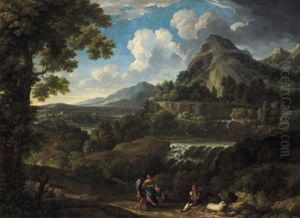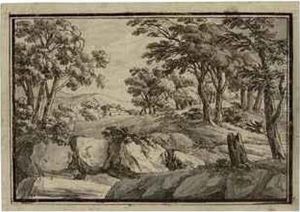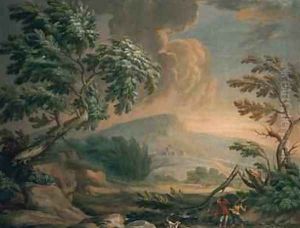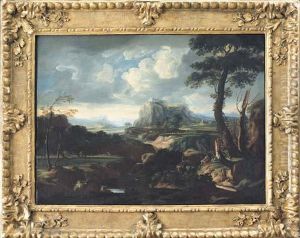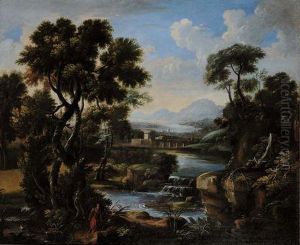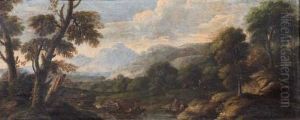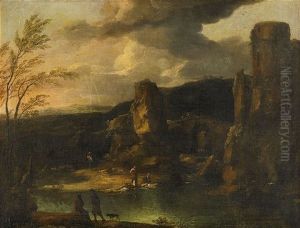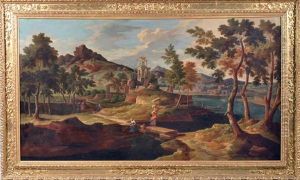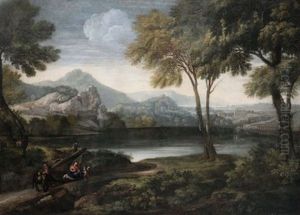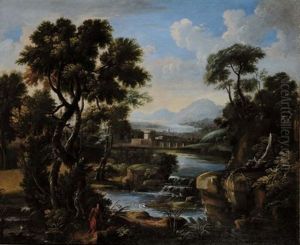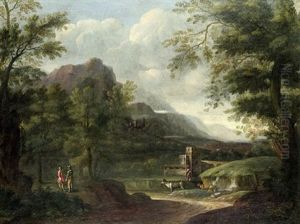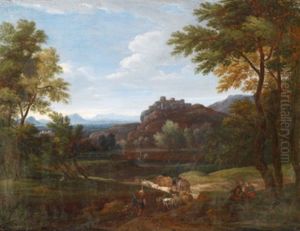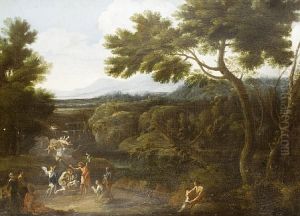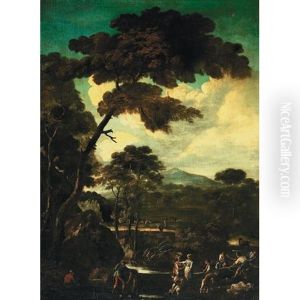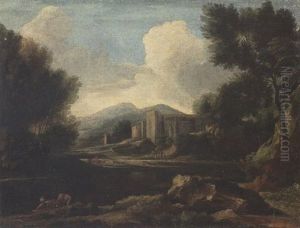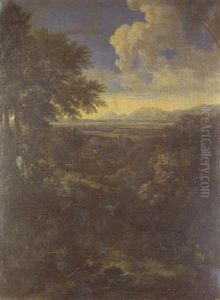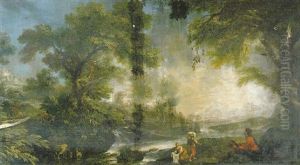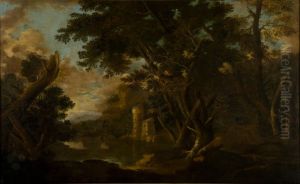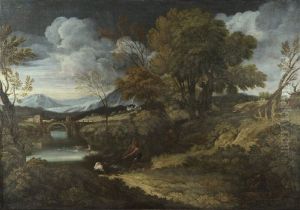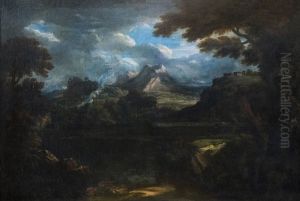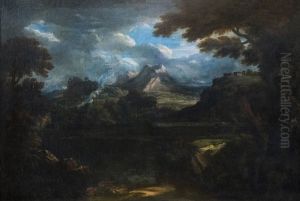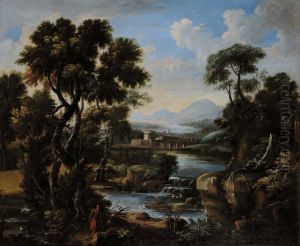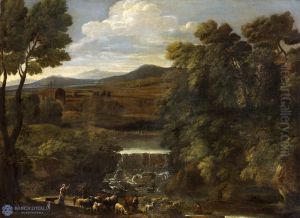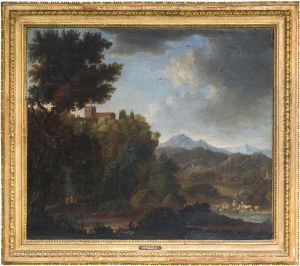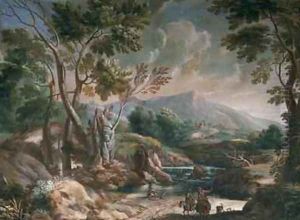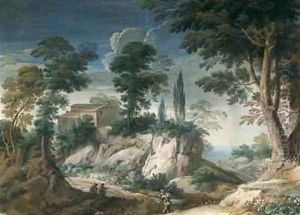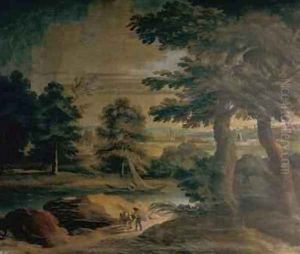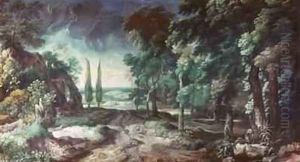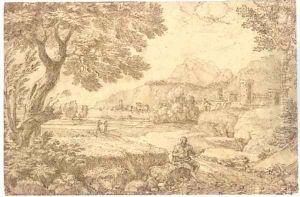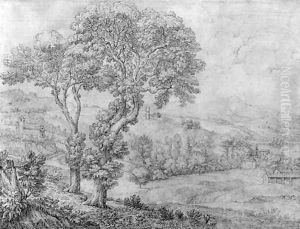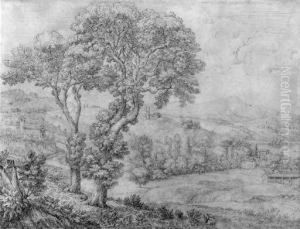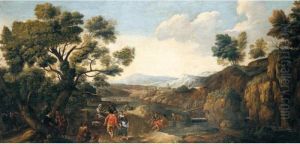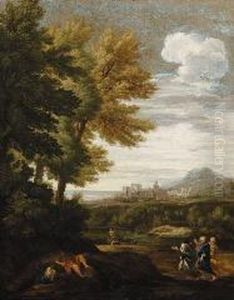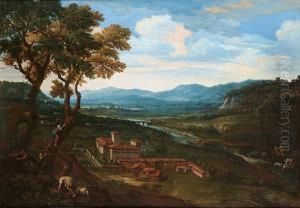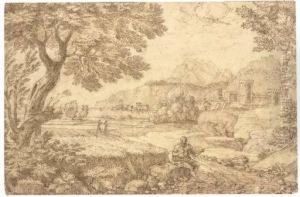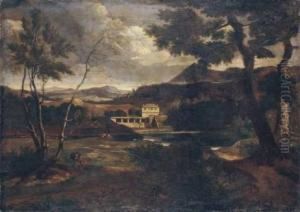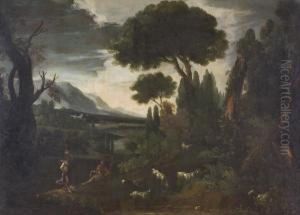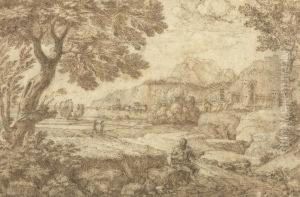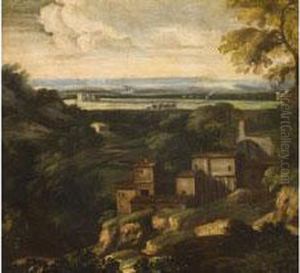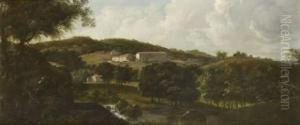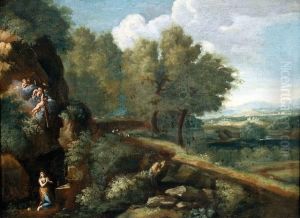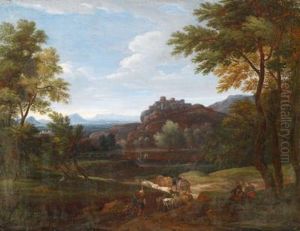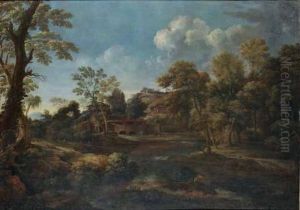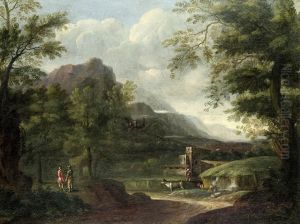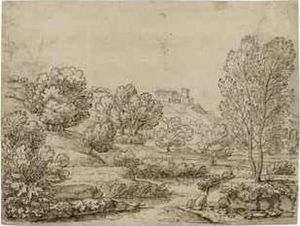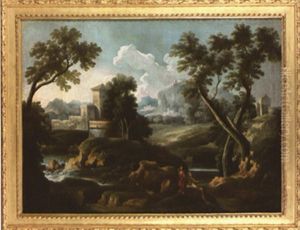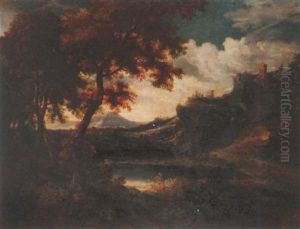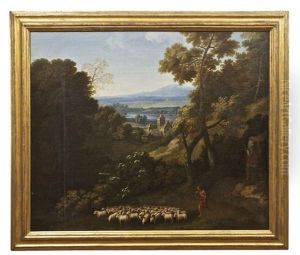Crescenzio Onofri Paintings
Crescenzio Onofri was an Italian painter born in 1632 in Rome, Italy. He flourished during the Baroque period, a time characterized by dramatic expression and grandeur. Onofri was primarily known for his landscape paintings, which often included classical or biblical figures as minor elements within the larger, expansive natural settings. His works are noted for their poetic rendering of nature, capturing the serene and pastoral beauty of the Italian countryside with a particular sensitivity to light and atmosphere.
In the context of art history, Onofri's work represents a link between the classical landscape traditions of the Renaissance and the more expressive and dynamic landscape painting that would emerge in the 18th century. He was influenced by the work of earlier landscape painters such as Annibale Carracci and Domenichino, and he worked to develop his own style that reflected a harmonious balance between naturalistic detail and idealized beauty.
Not much is known about Onofri's early life and training, but it is believed that he was a pupil of the painter Gaspard Dughet, who was also known as Gaspar Poussin due to his association with the more famous landscape artist Nicolas Poussin. Through Dughet, Onofri would have been exposed to the classical landscape tradition that prioritized compositional harmony and the emulation of the natural world.
Onofri's career unfolded primarily in Rome, where he painted for churches and private patrons. His landscapes were well-received and he gained a reputation for the quality of his work, which was sought after by collectors. One of the notable features of Onofri's paintings is the use of light, which he manipulated to create mood and highlight the textures of the natural world.
Although Crescenzio Onofri was not as widely known as some of his contemporaries, his contribution to landscape painting was significant. He continued to paint until his death in 1712 in Rome. Today, his works can be found in various art collections, both in Italy and internationally, and they continue to be appreciated for their quiet beauty and the skillful way in which they capture the essence of the Italian landscape.
